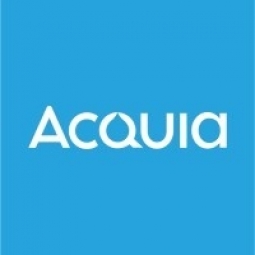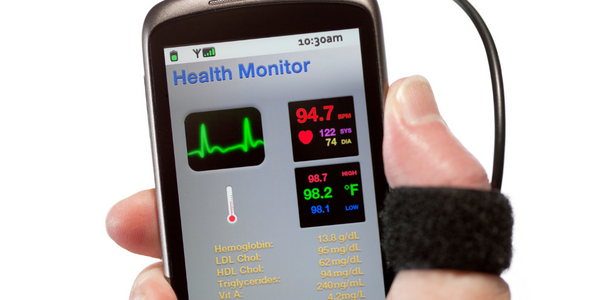Technology Category
- Application Infrastructure & Middleware - Middleware, SDKs & Libraries
- Functional Applications - Enterprise Asset Management Systems (EAM)
Applicable Industries
- Electrical Grids
- Healthcare & Hospitals
Applicable Functions
- Product Research & Development
- Sales & Marketing
Use Cases
- Asset Health Management (AHM)
- Asset Lifecycle Management
Services
- Cloud Planning, Design & Implementation Services
- System Integration
About The Customer
EBSCO Information Services is a global leader in providing digital research material to libraries, hospitals, medical institutions, and corporations. The company offers a wide range of content, including research databases, books and e-books, archives, point-of-care medical reference, and corporate learning tools. EBSCO serves millions of end users at tens of thousands of institutions worldwide. The company has been partnering with libraries and other institutions to improve research for over 70 years. Its online research platform attracts more than 100 million page views per day.
The Challenge
EBSCO Information Services, a leading provider of digital research material, faced a significant challenge as its marketing department expanded. The company's digital assets were scattered across various platforms including Microsoft Sharepoint, network drives, local hard drives, email attachments, desktops, and Google Drive. This disorganized digital landscape hindered EBSCO's scaling, leading to outdated branding, lack of cohesive metadata, and inefficiencies when creating duplicates of lost assets and posting one asset in multiple systems. The lack of a standardized asset metadata and clear labeling or historic versioning recorded in their ecosystem often left EBSCO’s marketing and sales teams unable to identify the most recent approved versions of assets. The scattered assets also resulted in wasted time and money creating duplicates of lost assets and inefficiently posting and maintaining one asset in multiple systems.
The Solution
To address these challenges, EBSCO turned to Acquia's Digital Asset Manager (DAM). After considering seven vendors from the Gartner Magic Quadrant, EBSCO determined that Acquia DAM was the perfect solution to resolve its digital asset chaos. The company seamlessly connected DAM to Drupal 8 and their Acquia Cloud CMS, positioning it to power all of their marketing sites. The single sign-on (SSO) integration and mobile-friendly design of Acquia DAM made it easy for EBSCO’s marketing, sales, and product management teams to self-register with the brand portal front end of DAM. This streamlined the process of locating and uploading assets they need, and managing their own projects more efficiently without dependency on the internal IT teams.
Operational Impact
Quantitative Benefit

Case Study missing?
Start adding your own!
Register with your work email and create a new case study profile for your business.
Related Case Studies.

Case Study
Hospital Inventory Management
The hospital supply chain team is responsible for ensuring that the right medical supplies are readily available to clinicians when and where needed, and to do so in the most efficient manner possible. However, many of the systems and processes in use at the cancer center for supply chain management were not best suited to support these goals. Barcoding technology, a commonly used method for inventory management of medical supplies, is labor intensive, time consuming, does not provide real-time visibility into inventory levels and can be prone to error. Consequently, the lack of accurate and real-time visibility into inventory levels across multiple supply rooms in multiple hospital facilities creates additional inefficiency in the system causing over-ordering, hoarding, and wasted supplies. Other sources of waste and cost were also identified as candidates for improvement. Existing systems and processes did not provide adequate security for high-cost inventory within the hospital, which was another driver of cost. A lack of visibility into expiration dates for supplies resulted in supplies being wasted due to past expiry dates. Storage of supplies was also a key consideration given the location of the cancer center’s facilities in a dense urban setting, where space is always at a premium. In order to address the challenges outlined above, the hospital sought a solution that would provide real-time inventory information with high levels of accuracy, reduce the level of manual effort required and enable data driven decision making to ensure that the right supplies were readily available to clinicians in the right location at the right time.

Case Study
Gas Pipeline Monitoring System for Hospitals
This system integrator focuses on providing centralized gas pipeline monitoring systems for hospitals. The service they provide makes it possible for hospitals to reduce both maintenance and labor costs. Since hospitals may not have an existing network suitable for this type of system, GPRS communication provides an easy and ready-to-use solution for remote, distributed monitoring systems System Requirements - GPRS communication - Seamless connection with SCADA software - Simple, front-end control capability - Expandable I/O channels - Combine AI, DI, and DO channels

Case Study
Hydro One Leads the Way In Smart Meter Development
In 2010, Ontario’s energy board mandated that time-of-use (TOU) pricing for consumers be available for all consumers on a regulated price plan. To meet this requirement, Hydro One needed to quickly deploy a smart meter and intelligent communications network solution to meet the provincial government’s requirement at a low cost. The network needed to cover Hydro One’s expansive service territory, which has a land mass twice the size of Texas, and its customers live in a mix of urban, rural, and remote areas, some places only accessible by air, rail, boat or snowmobile. Most importantly, the network needed to enable future enterprise-wide business efficiencies, modernization of distribution infrastructure and enhanced customer service. To meet these needs, Hydro One conceptualized an end-to-end solution leveraging open standards and Internet Protocols (IP) at all communication levels. The utility drew upon industry leaders like Trilliant to realize this vision.

Case Study
Driving Digital Transformations for Vitro Diagnostic Medical Devices
Diagnostic devices play a vital role in helping to improve healthcare delivery. In fact, an estimated 60 percent of the world’s medical decisions are made with support from in vitrodiagnostics (IVD) solutions, such as those provided by Roche Diagnostics, an industry leader. As the demand for medical diagnostic services grows rapidly in hospitals and clinics across China, so does the market for IVD solutions. In addition, the typically high cost of these diagnostic devices means that comprehensive post-sales services are needed. Wanteed to improve three portions of thr IVD:1. Remotely monitor and manage IVD devices as fixed assets.2. Optimizing device availability with predictive maintenance.3. Recommending the best IVD solution for a customer’s needs.

Case Study
HaemoCloud Global Blood Management System
1) Deliver a connected digital product system to protect and increase the differentiated value of Haemonetics blood and plasma solutions. 2) Improve patient outcomes by increasing the efficiency of blood supply flows. 3) Navigate and satisfy a complex web of global regulatory compliance requirements. 4) Reduce costly and labor-intensive maintenance procedures.








